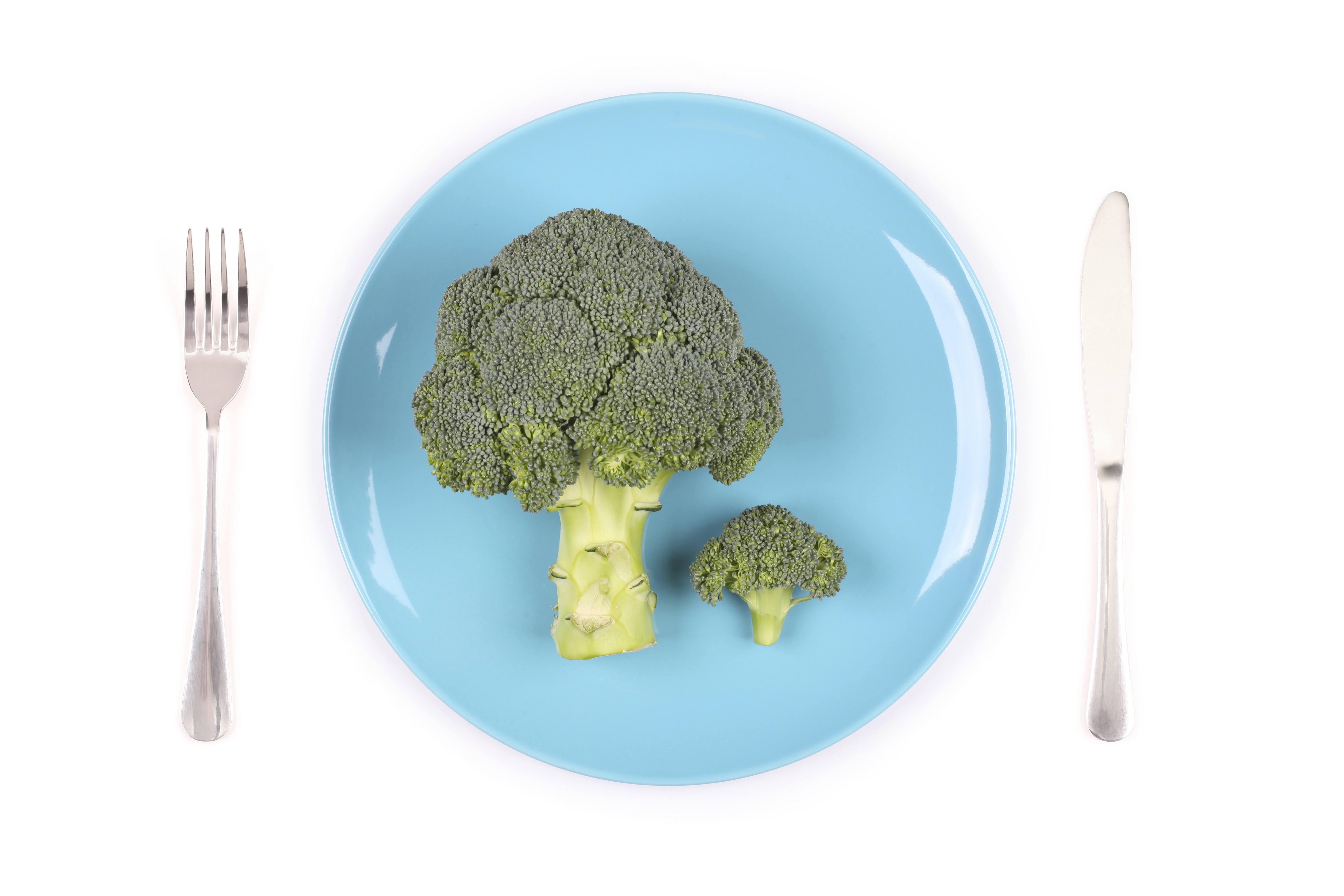Debbie J., MS, RD contributed this article –
Portion control is a major factor in your ability to balance the calories you take in from the food that you eat, with the calories that you expend throughout each day. This is vital to your ability to lose, maintain or gain weight.
Check out our Dietitian Q&A for more great info:
CLICK http://bloglafitness.azurewebsites.net/category/ask-our-dietitian/
People generally eat when they are hungry and stop when they are satisfied. Having a full plate in front of you, however, may prompt you to finish what’s served regardless of your appetite. Thus, starting with smaller portions makes sense. Whenever possible, try to serve yourself so that you are in control of your portions. Otherwise, just consume enough to no longer feel hungry.
So, how can you guage your portions without weighing or measuring your food?
Here are some common portion sizes provided in terms of measure with a corresponding way to “eyeball” the relative portion size in order to help you identify what portions look like. You can also practice by using your scale to weight various foods, and then attribute a way to gauge that portion size by using objects such as your hands and fingers. See the examples below.
Bread, Cereal, Rice and Pasta (commonly 1-3 per meal)
4” pancake or waffle = serving size 1 pancake = width just covers palm of adult hand
Bread = serving size 1 slice (1 oz.) = standard sandwich slice of bread
Pasta, rice, cooked cereal = serving size ½ Cup = size of a custard cup or ½ baseball
Vegetables (goal: 2-3 per meal)
Chopped vegetables (raw non leafy) = serving size ½ Cup = size of a custard cup or ½ baseball
Raw leafy vegetables = serving size 1 Cup = 1 baseball or fist of an average adult
Meat and Protein (commonly 1-3 per meal)
Nuts = serving size 1/3 Cup = level palmful for average adult
Lean meat, poultry, seafood = serving size 1 oz. = size of adult thumb
Peanut butter = serving size 2 Tablespoons = size of a ping-pong ball
Beans, cooked = serving size ¾ Cup = size of a tennis ball
Fats and Oils (limit to 1 per meal)
Butter, margarine or oil = serving size 1 teaspoon = 1 pat or size of a half-dollar
Cream cheese = serving size 1 oz. = size of two dominoes
Mayonnaise or dressing = serving size 1 Tablespoon = top portion of adult thumb
Sour cream or reduced = serving size 2 Tablespoons = size of a ping-pong ball
calorie salad dressing
Fruit (commonly 2-3 per day)
Dried fruit = ¼ Cup = 1 golf ball
Canned, chopped or cooked = serving size ½ Cup = size of a custard cup or ½ baseball
Fresh fruit = serving size 1 medium or ½ large = 1 tennis ball or ½ softball
Berries or grapes = serving size 1 Cup = 1 baseball or fist of an average adult
Milk, Cheese and Dairy products (commonly 1-3 per day)
Natural hard cheese = serving size 1½ oz. = 9-volt battery or 1-inch cube
Cottage cheese = serving size ½ Cup = size of a custard cup or ½ baseball
Remember to choose more fruits, vegetables and whole grain, and limit processed starches. Include protein at each meal and milk products daily. Keeping tabs on how much goes in your mouth is just as important as what goes in your mouth!
Learn how to effortless follow the TOP TIPS 90 DAY WEIGHT LOSS and WORKOUT PLAN and LIVING HEALTHY. CLICK HERE and SUBSCRIBE today!


That’s the goal for me….I’d say I’m 90% efficient when eating right…..still working on portion control though 🙂 stay tuned!
It is really hard to lose weight